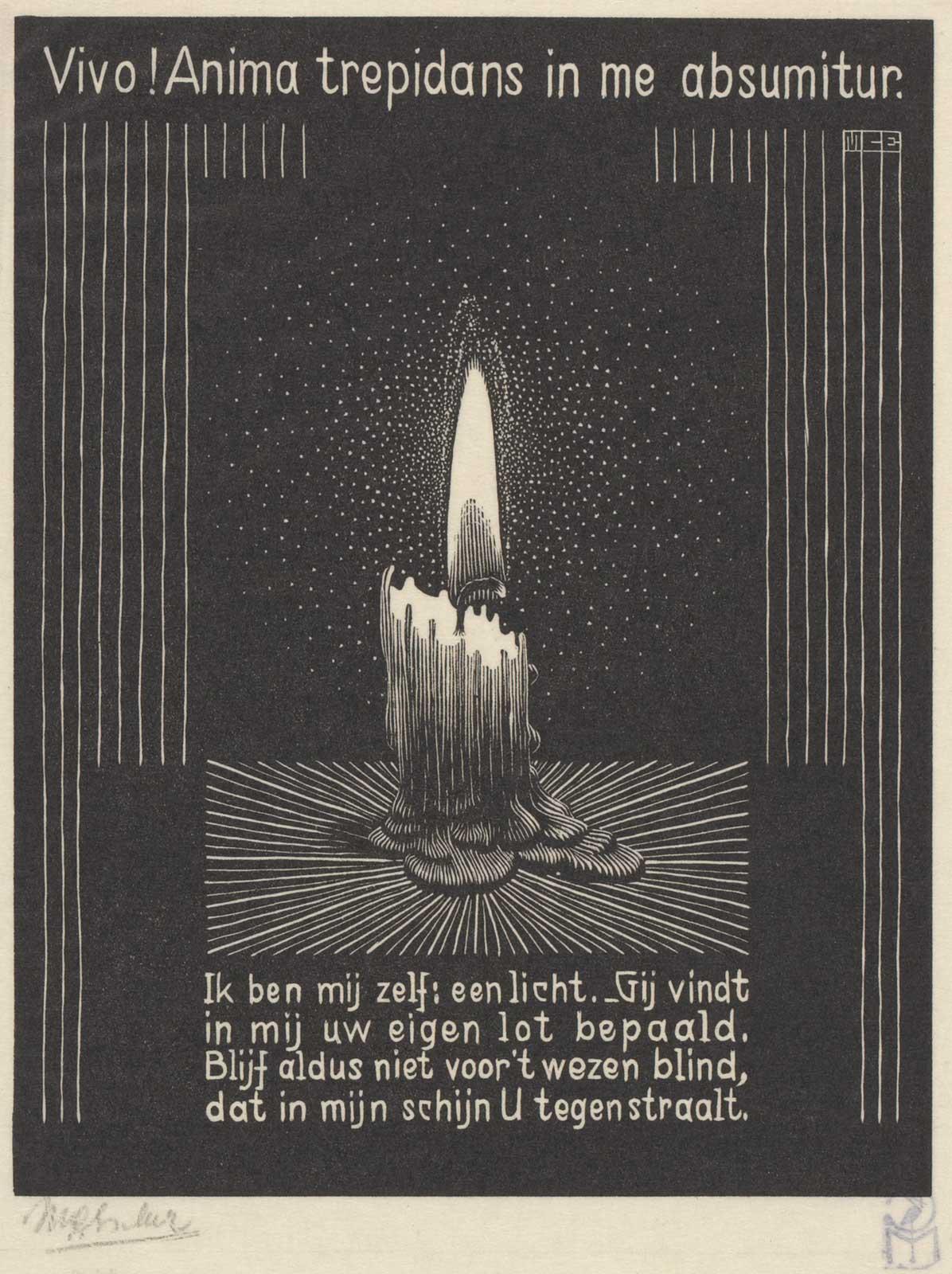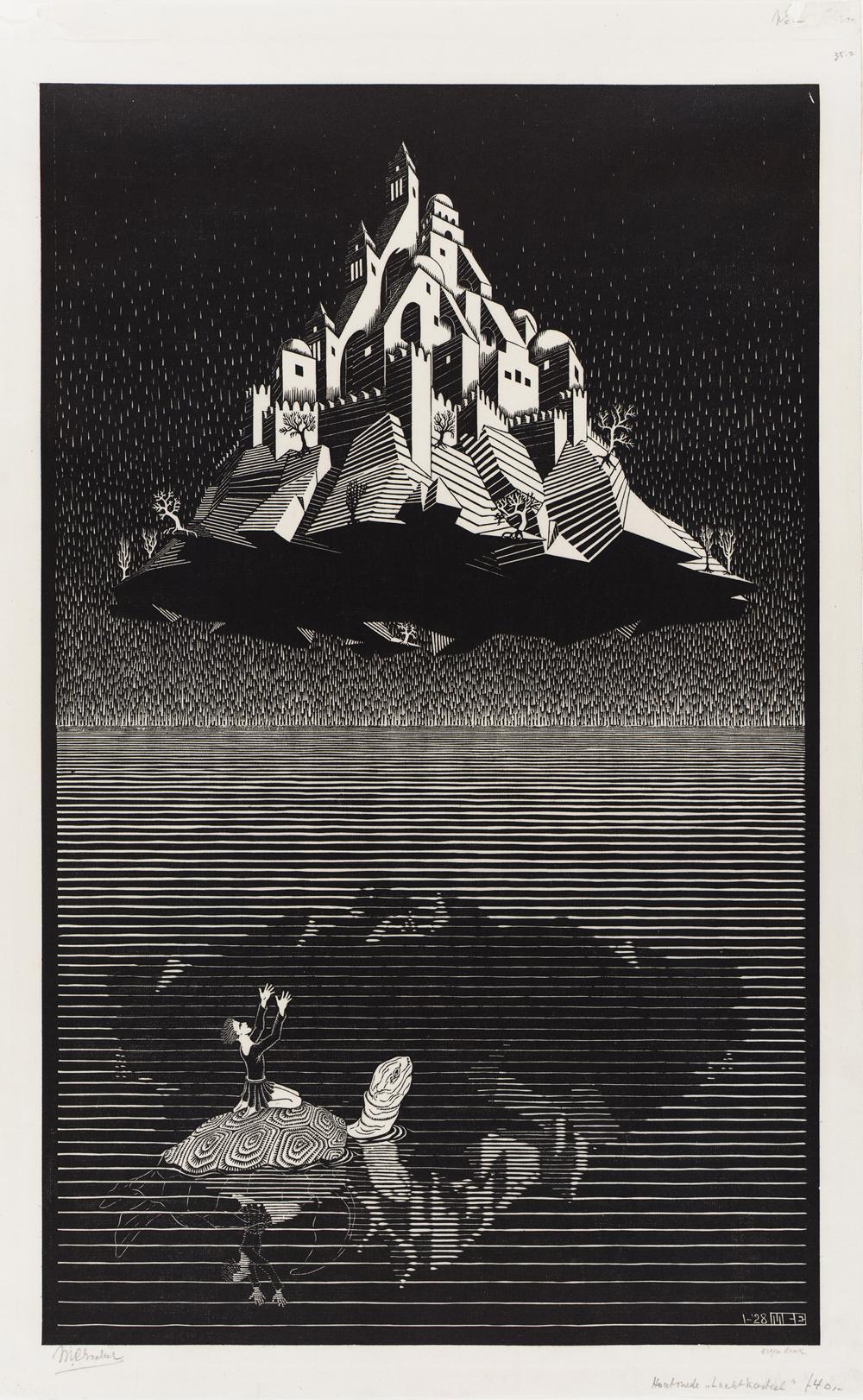

The universe of M.C. Escher is governed by harmony, tranquillity, order and peace. Disharmony, unrest, disorder and war are far away. Or serve as a background for the beauty in the foreground. Consider in this regard prints like Contrast (Order and Chaos) and Crystal. Escher sees the world as an everlasting struggle between these extremes. As an artist he had the task of showing the world that order is self-evident, although it sometimes seems remote. At the presentation of the Cultural Prize of Hilversum in 1965, he said this about it:
'I try in my prints to testify that we live in a beautiful and orderly world, not in chaos without norms, even though that is how it sometimes appears.'
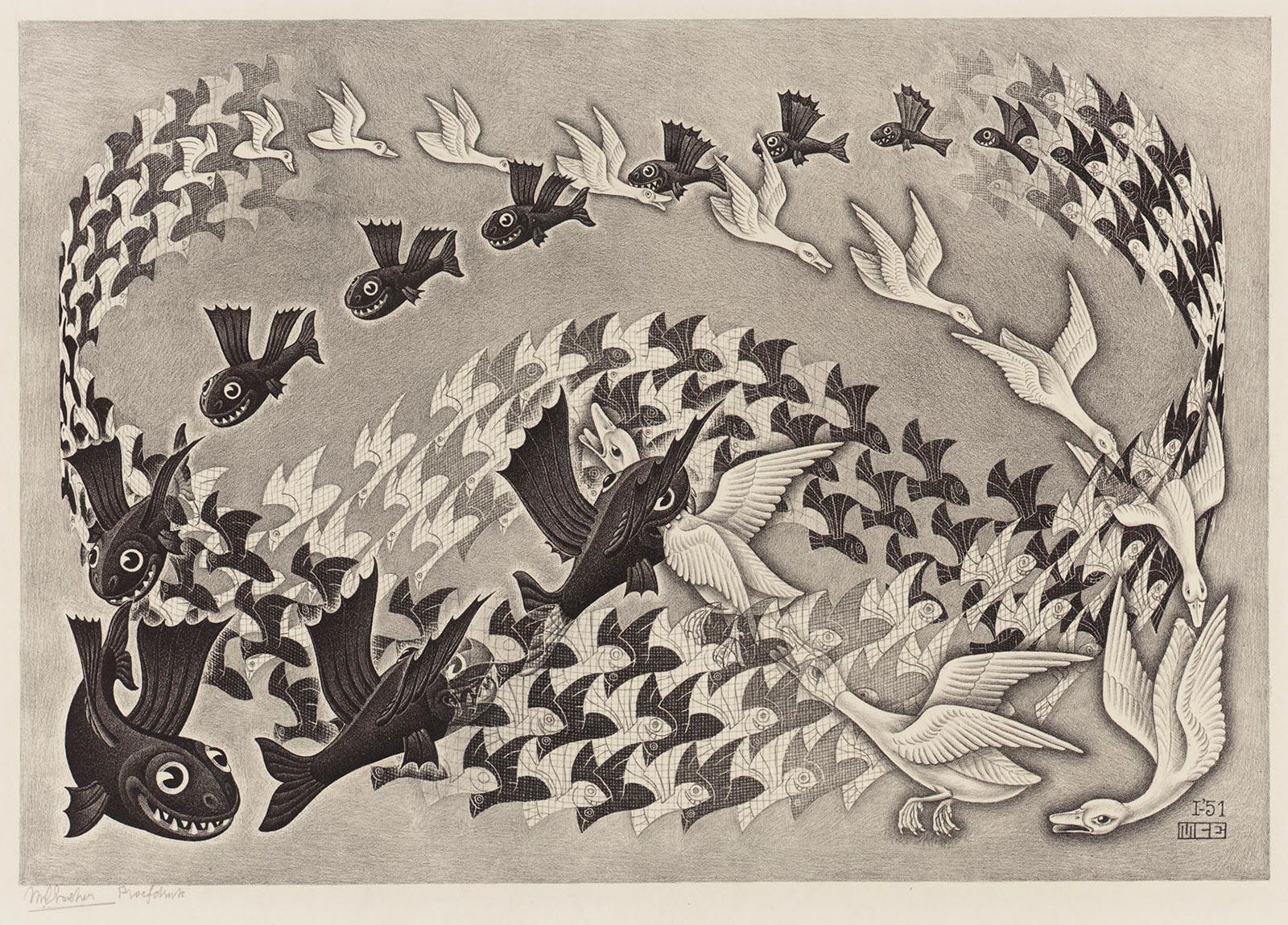
It is therefore quite remarkable that a print exists in which unrest prevails, focusing more on war than on peace. At the tail end of 1950, Escher worked on the lithograph Predestination, which he initially called Topsy-Turvy World. In it, birds and predatory fish attack each other. He described the print himself as follows:
'An aggressive, voracious fish and a shy and vulnerable bird are the actors in this drama: such contrasting traits of character lead inevitably to the denouement. A regular pattern floats like a ribbon in space. Lower down, in the middle, this picture strip is made up of fish and birds, but by a substitution of figures, only birds remain on the left side and fish on the right. Out from these gradually fading extremities, one representative of each sort breaks loose - a black, devilish fish and a white bird, all innocence, but sad to say irrevocably doomed to destruction. The fate of each is played out in the foreground.'
In a thrilling dance, the birds and fish swirl around each other, until fate is executed. When the bird has just released itself, it is already attacked and barely escapes death. But in the foreground he is caught in full flight after all by the voracious fish.
The contrast between good and evil, guilt and innocence, war and peace, in the form of a black, diabolical fish and a white, innocent bird is reminiscent of Circle Limit IV (Heaven and Hell). In this work white, innocent angels are juxtaposed with black, devilish bats. Yet there is a significant difference too: in Circle Limit IV a status quo exists. The two species are interlocked in a pattern that renders them interdependent. In Predestination the white bird loses and the black predatory fish wins.

It is an interesting twist of nature. Fish do not eat birds, whereas the opposite is common. As a lover of nature, Escher would have known this. By giving the print the title Predestination, he presents the fish’s action and the bird’s death as an unavoidable fate. A fate that goes against nature. The birds and fish originate from the same basic form. As such, he seems to be suggesting that the outcome could just as well have been the other way round. The bird and the fish are like two sides of the same coin. Fate determines which side ends at the top. In 1957 an article from J.C. Ebbinge Wubben (director of the Museum Boymans, Rotterdam) appeared in Openbaar Kunstbezit (Public Art Property), under the title Noodlot (Doom), in which Escher gives his own description of the history of its origins. In it, Escher states that the question is whether he himself determines the fate of the beings who populate his tessellations:
'The idea of 'Doom' came to me, purely because of the characters I conceived as the two animal motifs. If it seems strange that such simple figures could have characters, it seems even more strange to suppose that they themselves might shape their own character. I have such sensations all the time when I am working on designs for regular divisions of the plane. It seems it is not I who is doing the creating, but rather the innocent flat patches over which I am slaving that have their own will, and it is they who guide the movement of my hand as I draw.'
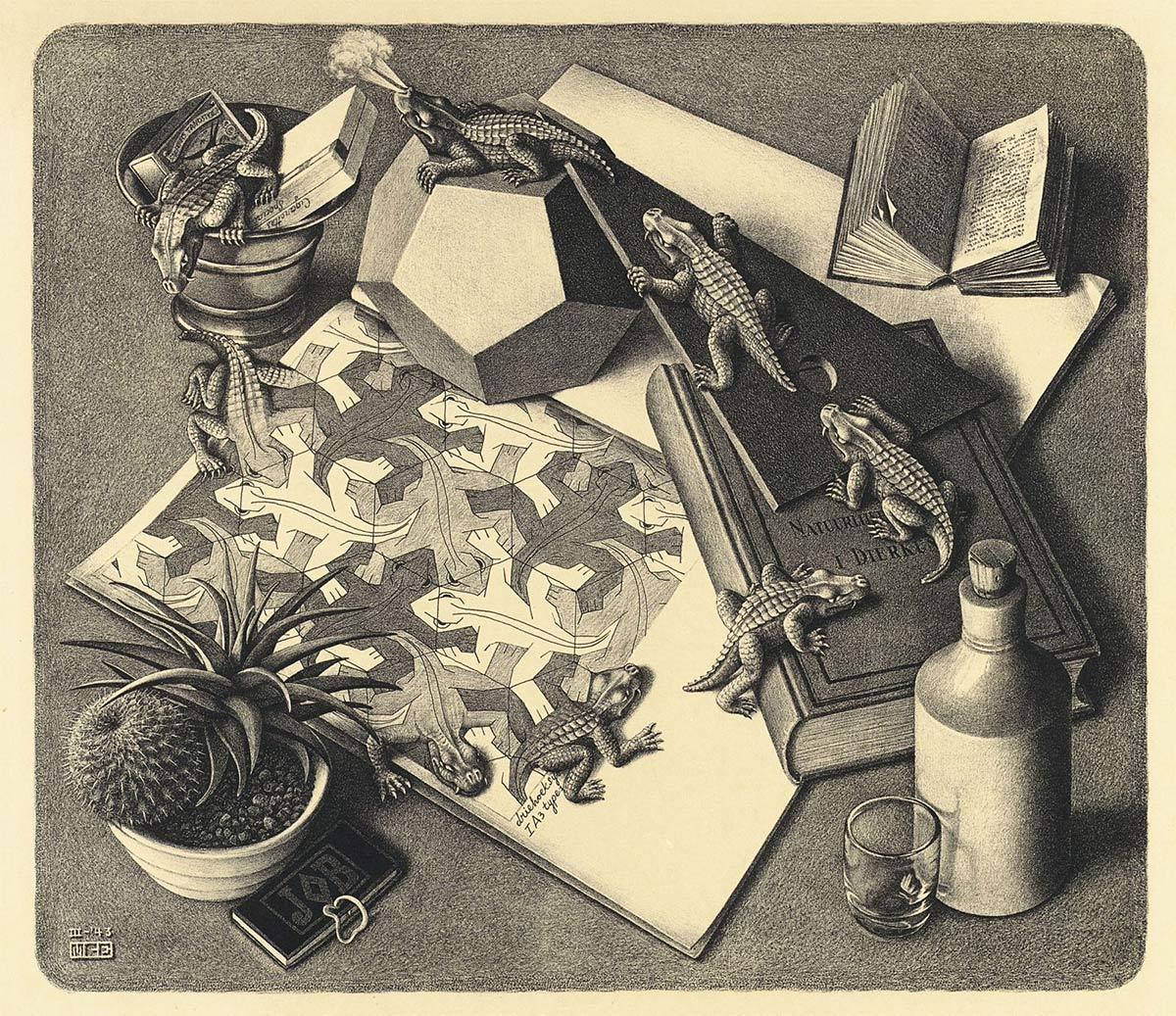
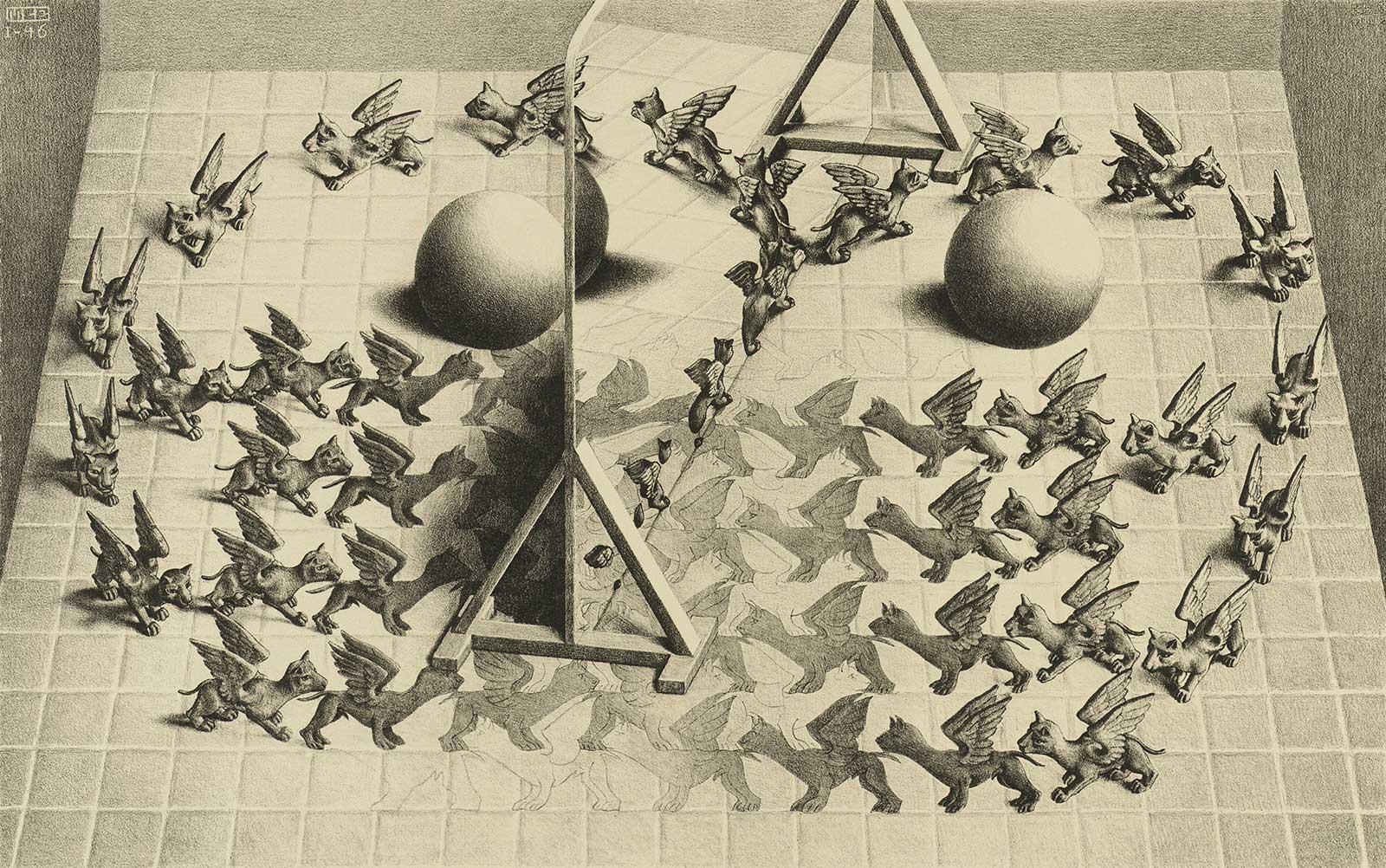
Giving life to shapes in a two-dimensional tessellation so as to produce three-dimensional, walking, flying and swimming creatures is something that Escher did often in his career. He was fascinated by the suggestive possibilities that the flat surface offers to deceive the eye. He explored this in such works as the prints Reptiles and Magic Mirror. Because the birds and fish meet in the middle, the print is also reminiscent of the Möbius bands he would create many years later. Lastly, there are similarities with two symbols for infinity; the lemniscate and the Ouroboros. The latter is a snake or dragon that bites its own tail and thus forms an eternal circle. These symbols can be linked to more Escher prints, but due to the fish that bites into the bird, the ouroboros features even more prominently here.
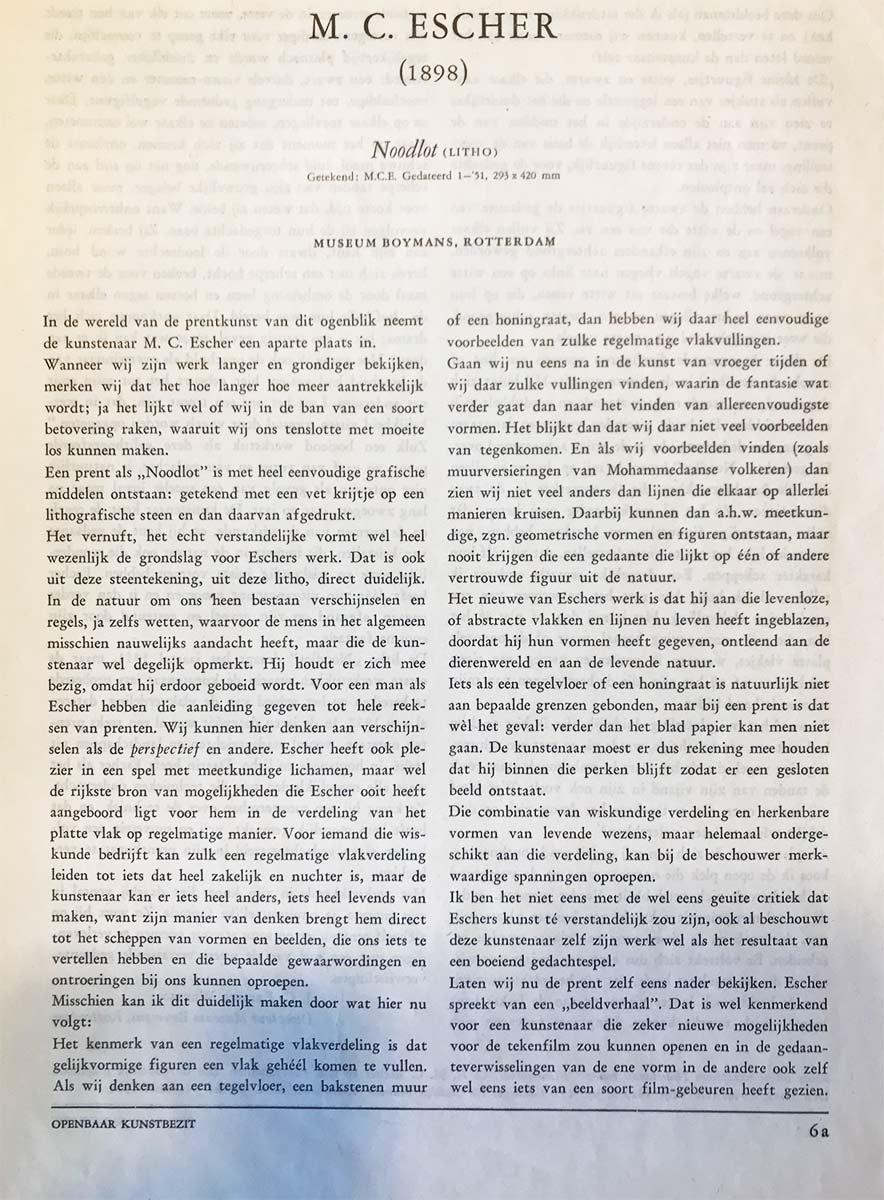
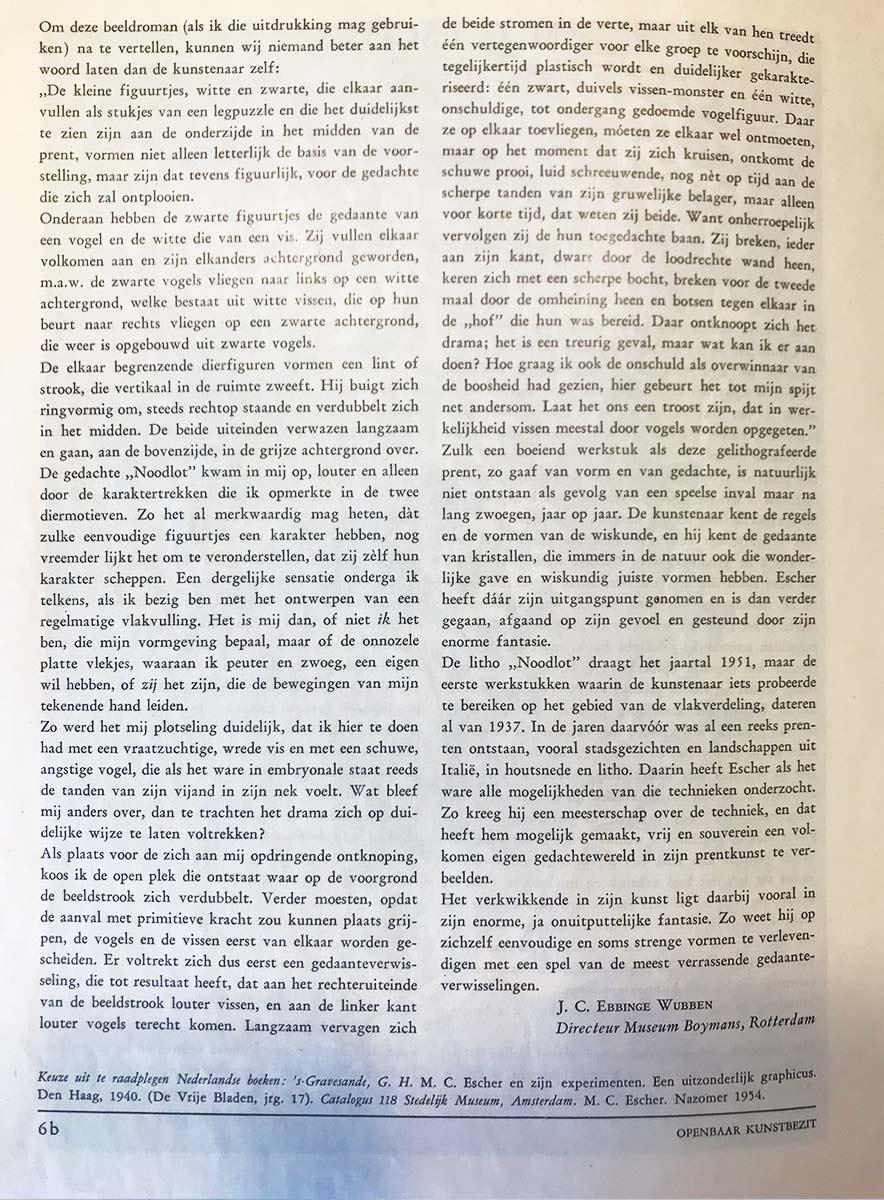
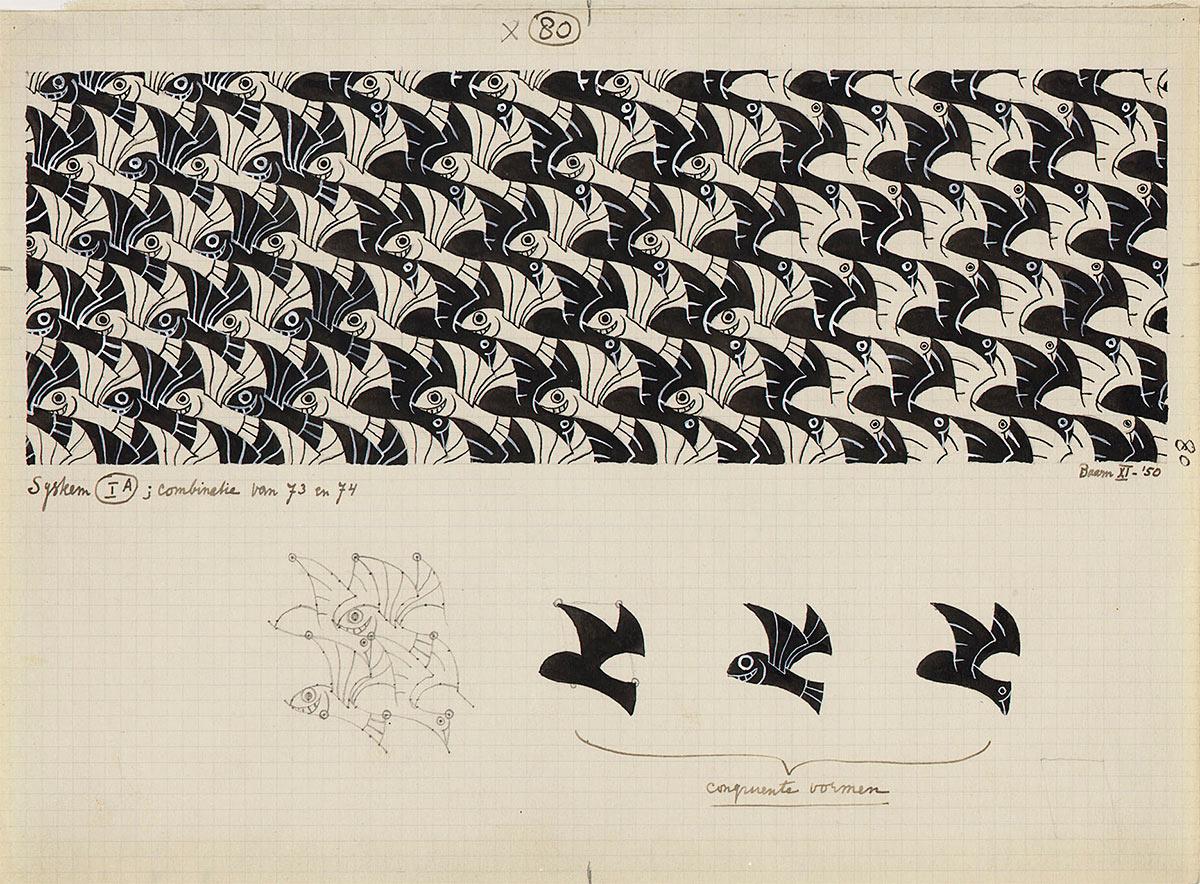

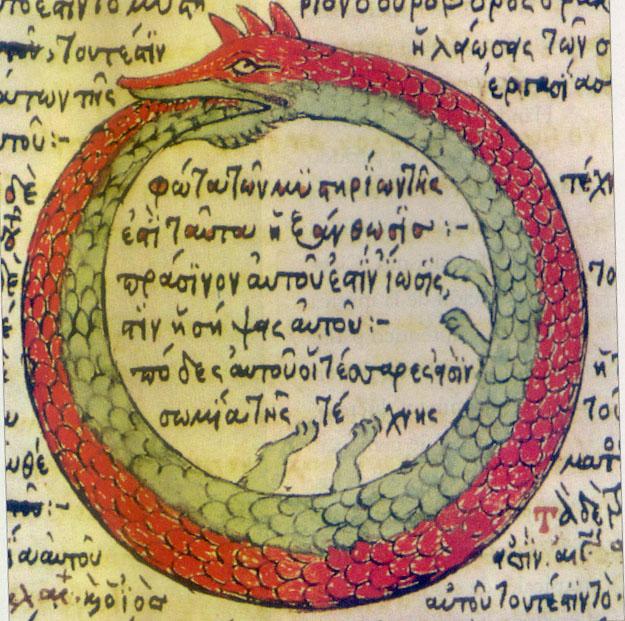
In keeping with what was common practice for Escher, Predestination is a print that originated from a previously made tessellation too. In this case, Regular Division drawing no. 80, from November 1950. In turn, that drawing is a combination of two other drawings, numbers 73 and 74, in which the bird and the fish each have their own tessellation. He also uses number 80 as the basis for the first tessellation in his book The Regular Division of the Plane, which appears in 1958. Regular Division of the Plane I involves a metamorphosis in which a grey surface slowly changes into a chequered pattern, from which a bird, then a fish, and then a mixture of both appears. In 1959 he used number 73 (the bird) as the basis for a tile. In the girls’ school in The Hague, three pillars featuring a tessellation of tiles were installed in the auditorium. Predestination was exhibited in 1971 during the performance of Time Spirit, Jurriaan Andriessen’s symphony. Escher attended the premiere and later said:
'Blending together sometimes 10 or more slides of the same print, on different scales, fish and birds growing ever larger, to a shrill climax (as is the case in Predestination, where you hear the poor bird squawking its fear of death, as it were, when the fish finally catches it). It gave me a lump in my throat and complete strangers who were also listening said it sent shivers down their spines.'
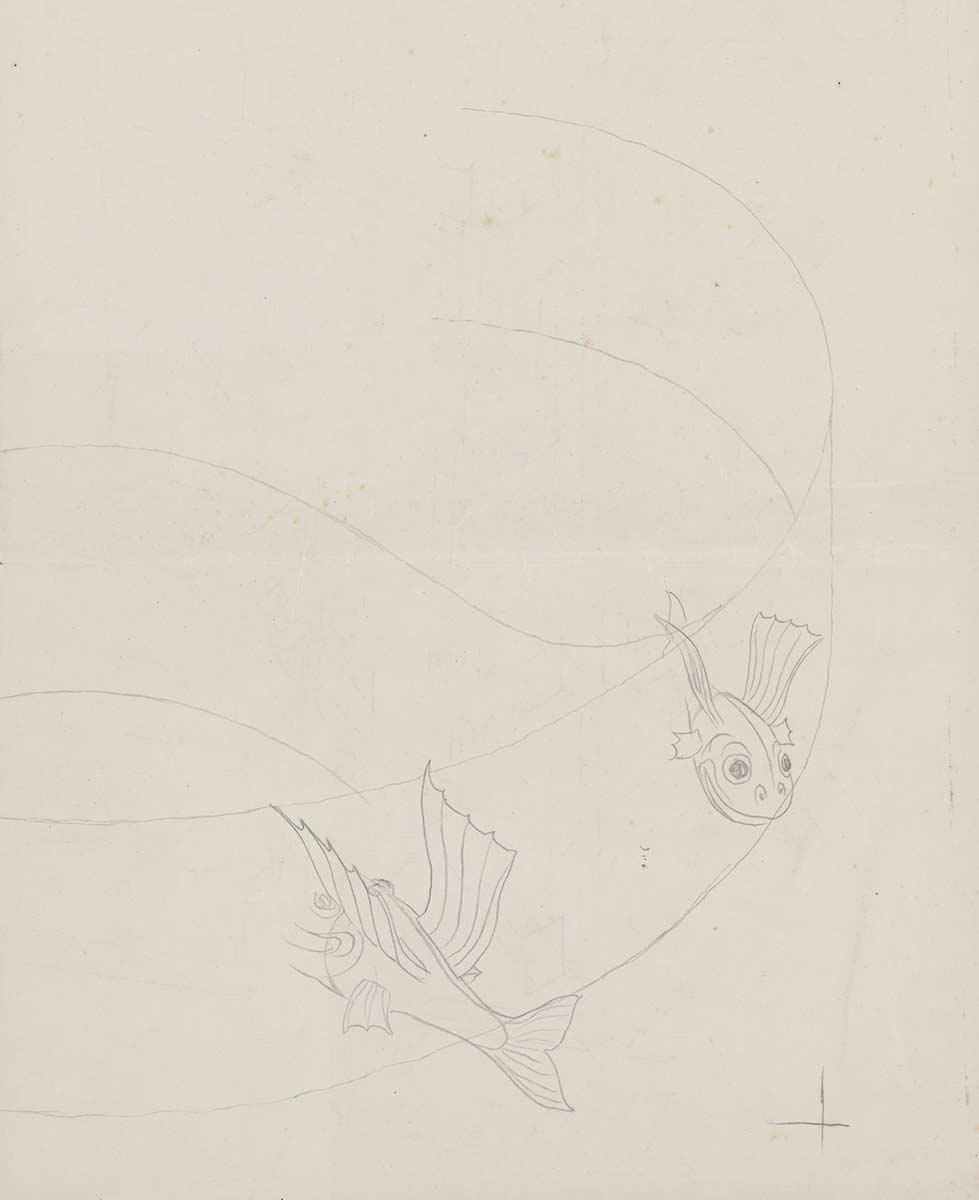

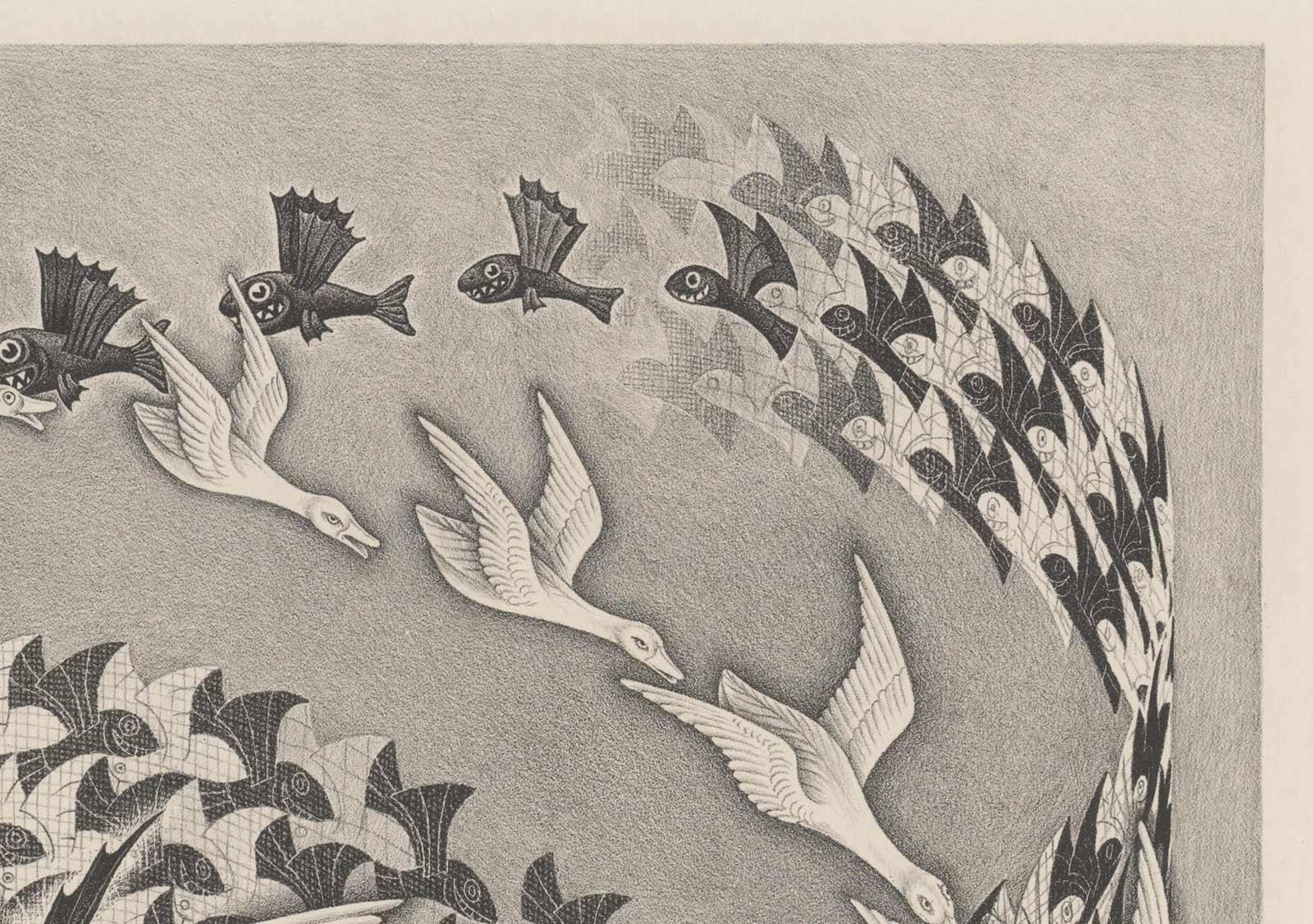

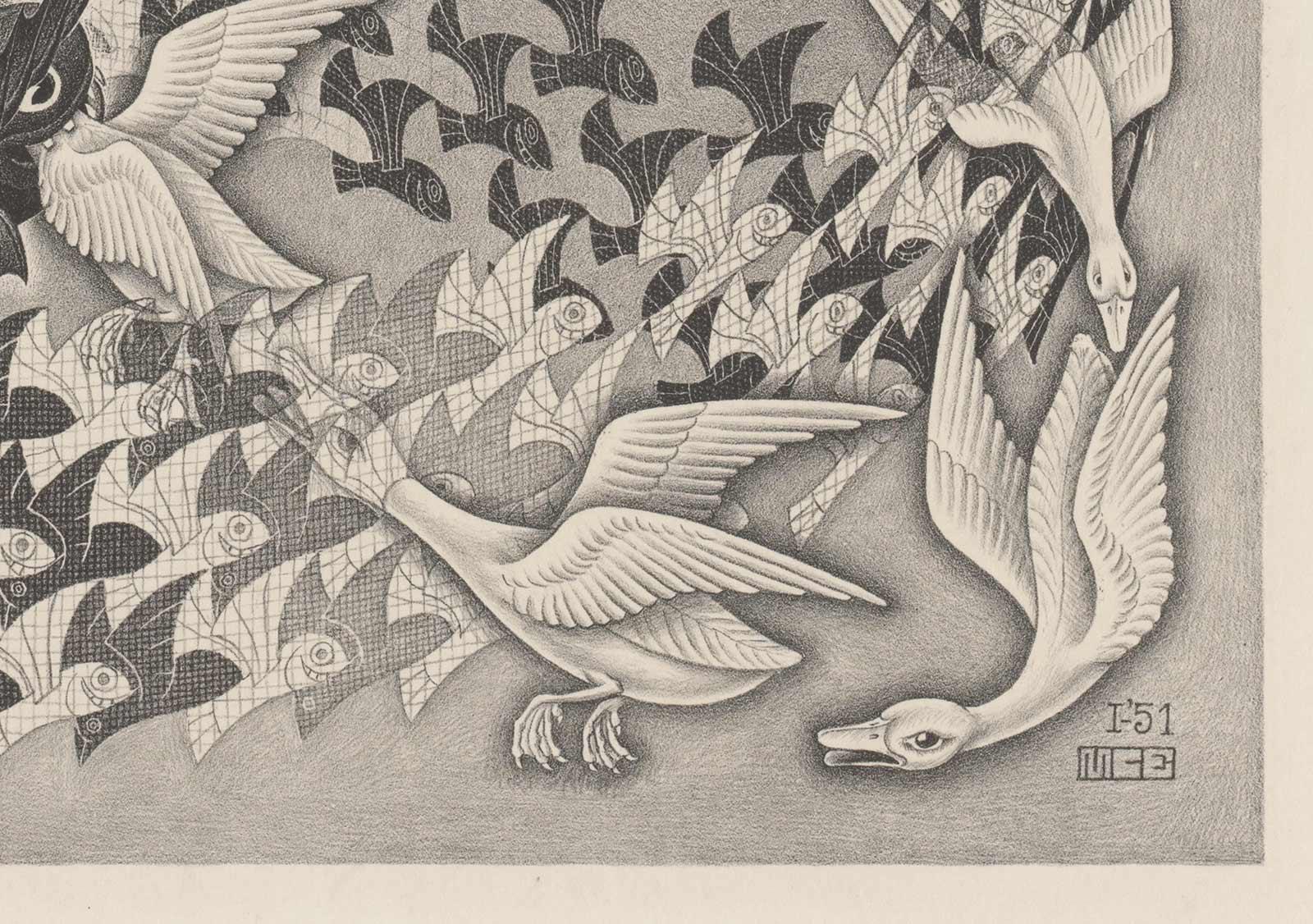
More Escher today

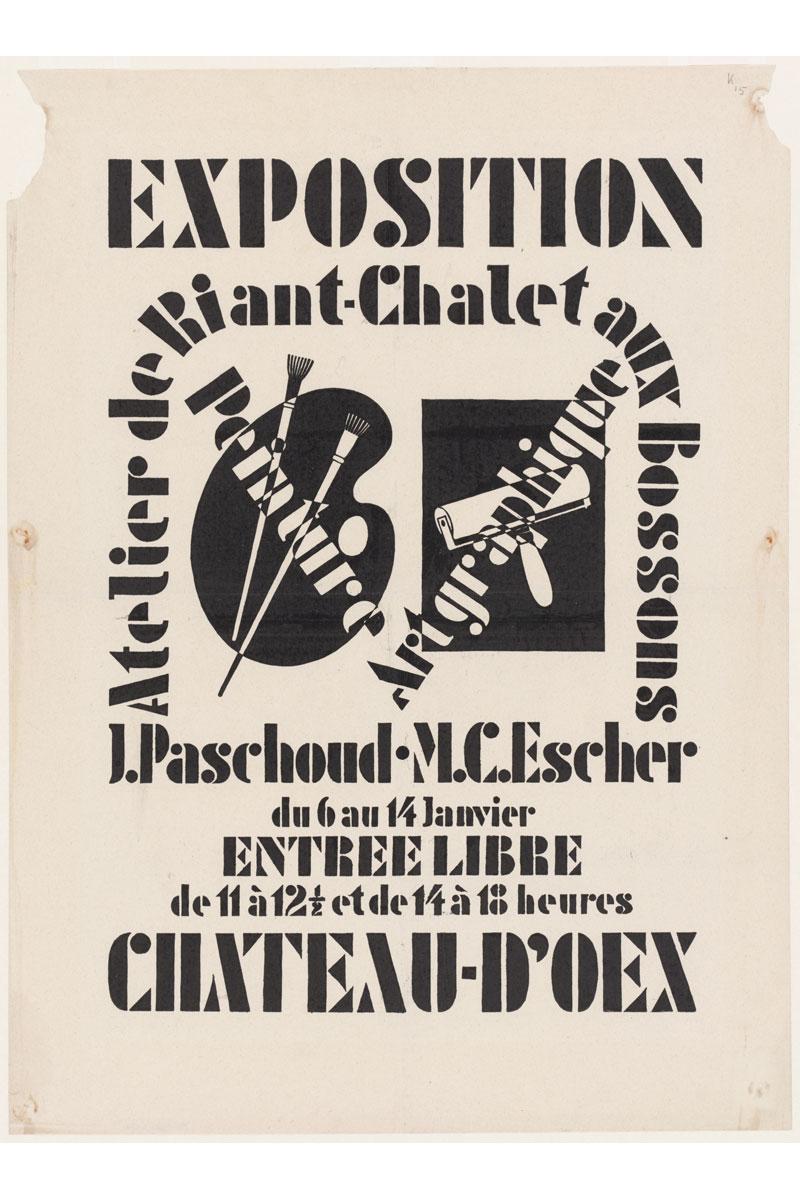
Exhibition in Château-d'Oex
